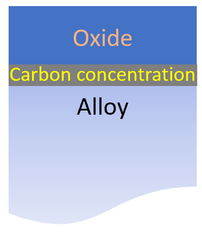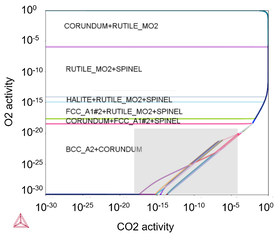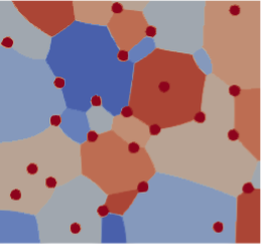Corrosion and Microstructure Evolution on Additively Manufactured Metals
Supercritical CO2 based Brayton cycles can enable very high efficiency power production due to the improvements in the Carnot efficiencies. The onus is now on materials and components to withstand the high pressures and temperatures required during operation. Moreover, a CO2 environment can corrode materials via oxidation and carburization. However, knowledge of materials performance under these operating conditions are very limited.
Therefore, we are developing thermochemical reaction-diffusion models combined with thermodynamic equilibrium predictions to evaluate the performance of various metal alloys that are being considered . Another major implication of the high-temperature operation is on the mechanical strength and creep performance of materials. To combat this an effective strategy is to include nano-sized oxide particles as barriers to dislocation and creep. To this end, we are using the phase field method to model and predict micro-structural evolution during both alloy synthesis and operation. These changes in micro-structure can then be used to determine changes in alloy properties using the Process-Structure-Property-Performance framework. With the rise of alloy development emphasis is placed on additive manufacturing processes to account for non-equilibrium effects to aid in prototyping.
Therefore, we are developing thermochemical reaction-diffusion models combined with thermodynamic equilibrium predictions to evaluate the performance of various metal alloys that are being considered . Another major implication of the high-temperature operation is on the mechanical strength and creep performance of materials. To combat this an effective strategy is to include nano-sized oxide particles as barriers to dislocation and creep. To this end, we are using the phase field method to model and predict micro-structural evolution during both alloy synthesis and operation. These changes in micro-structure can then be used to determine changes in alloy properties using the Process-Structure-Property-Performance framework. With the rise of alloy development emphasis is placed on additive manufacturing processes to account for non-equilibrium effects to aid in prototyping.



